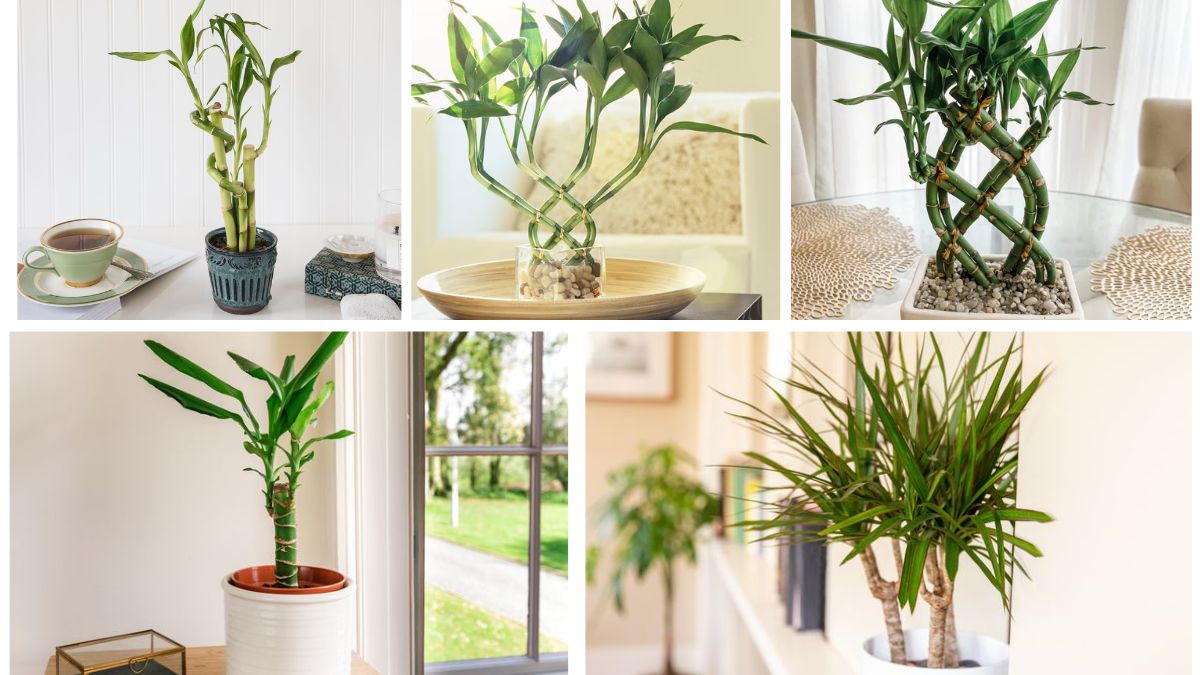Indoor plants have become an essential part of modern living spaces, not only for their aesthetic charm but also for their ability to improve air quality and create a sense of calm. Among the many indoor plant options, bamboo plants stand out as symbols of luck, prosperity, and resilience. Their elegant stems and vibrant green leaves add a refreshing, natural touch to homes and offices.
Whether you’ve chosen a lucky bamboo plant (Dracaena sanderiana) or a true bamboo species suitable for pots, proper care is essential to keep it thriving indoors. Although bamboo is relatively low-maintenance, it does have specific requirements when grown inside, away from its natural environment.
This guide provides a complete overview of how to take care of a bamboo plant indoors, covering watering, lighting, soil, potting, pruning, common problems, and even feng shui placement tips.
Types of Bamboo Plants Grown Indoors
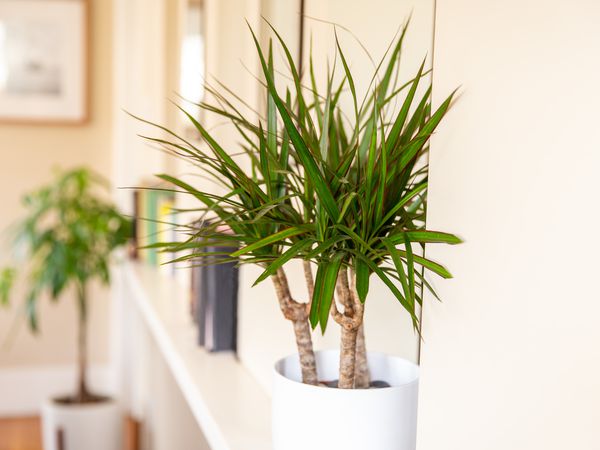
Before diving into care, it’s important to know which type of bamboo you’re growing, since their needs can differ slightly.
- Lucky Bamboo (Dracaena sanderiana)
- Not a true bamboo, but a popular indoor plant grown in water or soil.
- Known for its spiral or braided stems and symbolic association with luck and prosperity.
- Very easy to care for, making it a favorite for beginners.
- True Bamboo Varieties for Pots
- Some dwarf or clumping bamboo species can be grown indoors in containers.
- Examples include Bambusa ventricosa (Buddha’s Belly Bamboo) and Pleioblastus pygmaeus.
- These require more attention than lucky bamboo, as they grow faster and need regular trimming.
For most indoor gardeners, lucky bamboo is the plant of choice, so this guide will primarily focus on its care, while also offering tips for true bamboo.
Light Requirements for Indoor Bamboo
Light plays a crucial role in bamboo plant health.
- Lucky Bamboo: Prefers bright, indirect light. Direct sunlight can scorch its leaves, causing them to turn yellow. A spot near a north or east-facing window works best. If kept in a darker area, supplement with fluorescent or LED grow lights.
- True Bamboo: Needs more light than lucky bamboo. Place in a bright room with filtered sunlight, avoiding harsh midday rays.
Tip: Rotate the pot every few weeks so that all sides of the plant receive equal light, preventing lopsided growth.
Watering Your Indoor Bamboo Plant
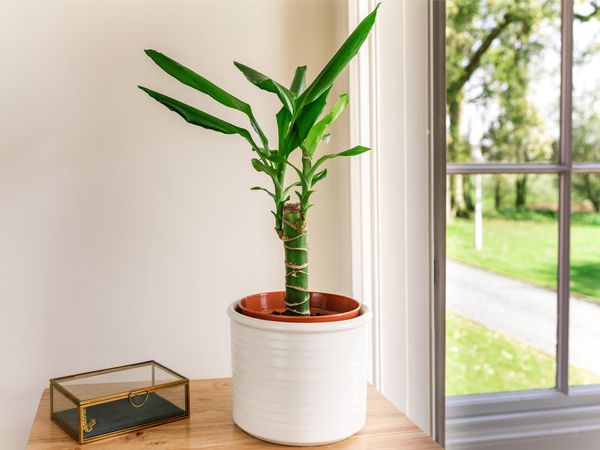
Watering is one of the most critical aspects of bamboo care.
Lucky Bamboo in Water:
- Use distilled or filtered water to avoid chlorine and fluoride, which can damage the plant.
- Ensure that the roots are always submerged in at least 1–2 inches of water.
- Change the water every 7–10 days to prevent stagnation and bacterial growth.
- Clean the container and rinse the roots during each water change.
Lucky Bamboo in Soil:
- Keep the soil consistently moist but not soggy.
- Water when the top inch of soil feels dry.
- Make sure the pot has drainage holes to prevent root rot.
True Bamboo in Pots:
- Requires more water, especially in dry indoor climates.
- Water deeply until excess water drains out from the bottom, then allow the soil to dry slightly before watering again.
Warning: Overwatering is a common mistake—yellowing leaves often signal excess water or poor drainage.
Temperature and Humidity Needs
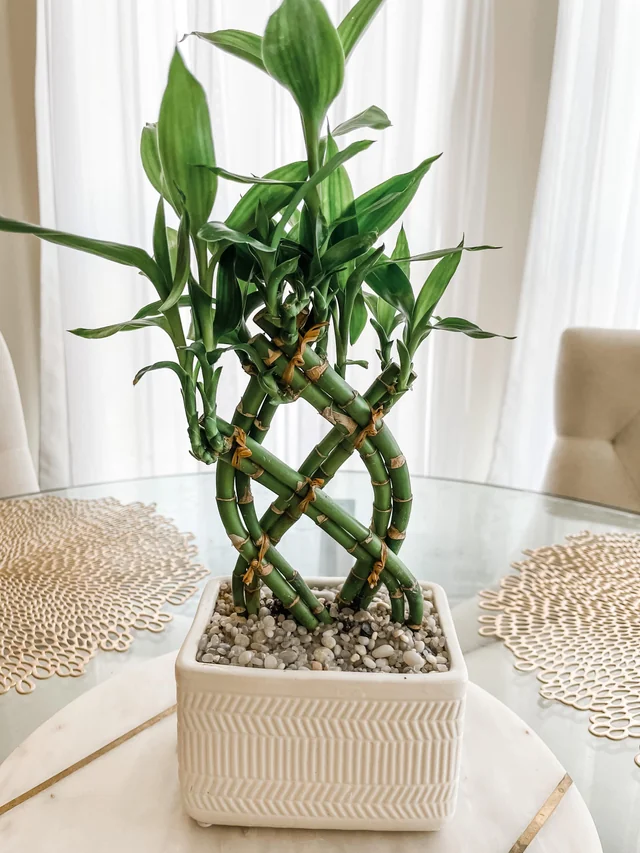
Bamboo thrives in warm, humid conditions, mimicking its tropical origins.
- Ideal Temperature Range: 65–90°F (18–32°C). Avoid placing bamboo near air conditioners, heaters, or drafty windows.
- Humidity: Bamboo loves humidity. Mist the leaves 2–3 times per week or place the pot on a pebble tray with water to maintain moisture levels.
For very dry indoor climates, consider using a small humidifier nearby.
Soil and Fertilizer Requirements
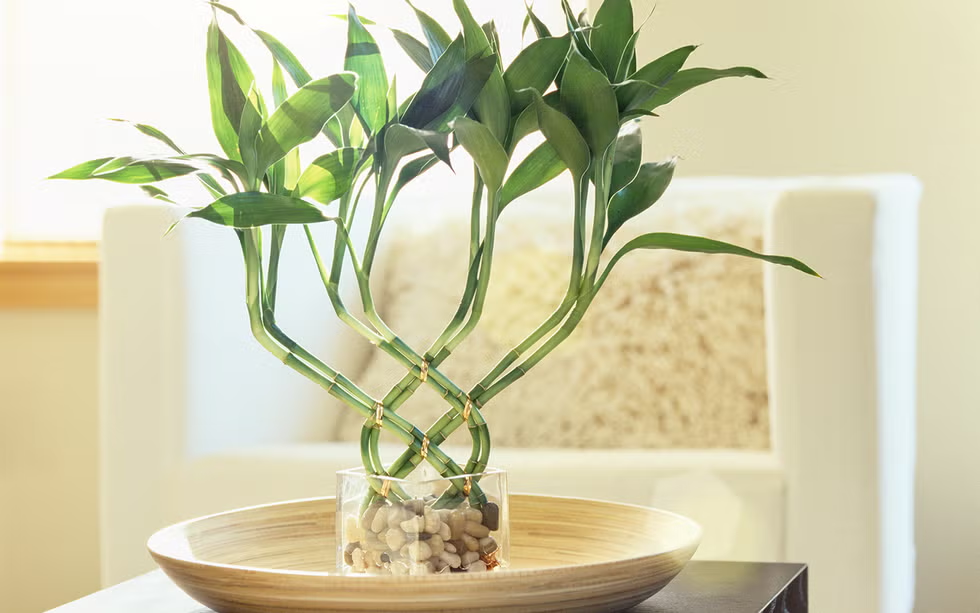
Lucky Bamboo in Soil:
- Use a well-draining potting mix, preferably one designed for houseplants.
- Avoid heavy garden soil that retains too much water.
Fertilizer:
- Lucky Bamboo: Use a diluted liquid fertilizer (1/10th strength) every 6–8 weeks. Overfertilizing can burn the roots and cause yellow leaves.
- True Bamboo: Feed with a balanced liquid fertilizer (10-10-10) every 4–6 weeks during the growing season (spring and summer).
Potting and Repotting Indoor Bamboo
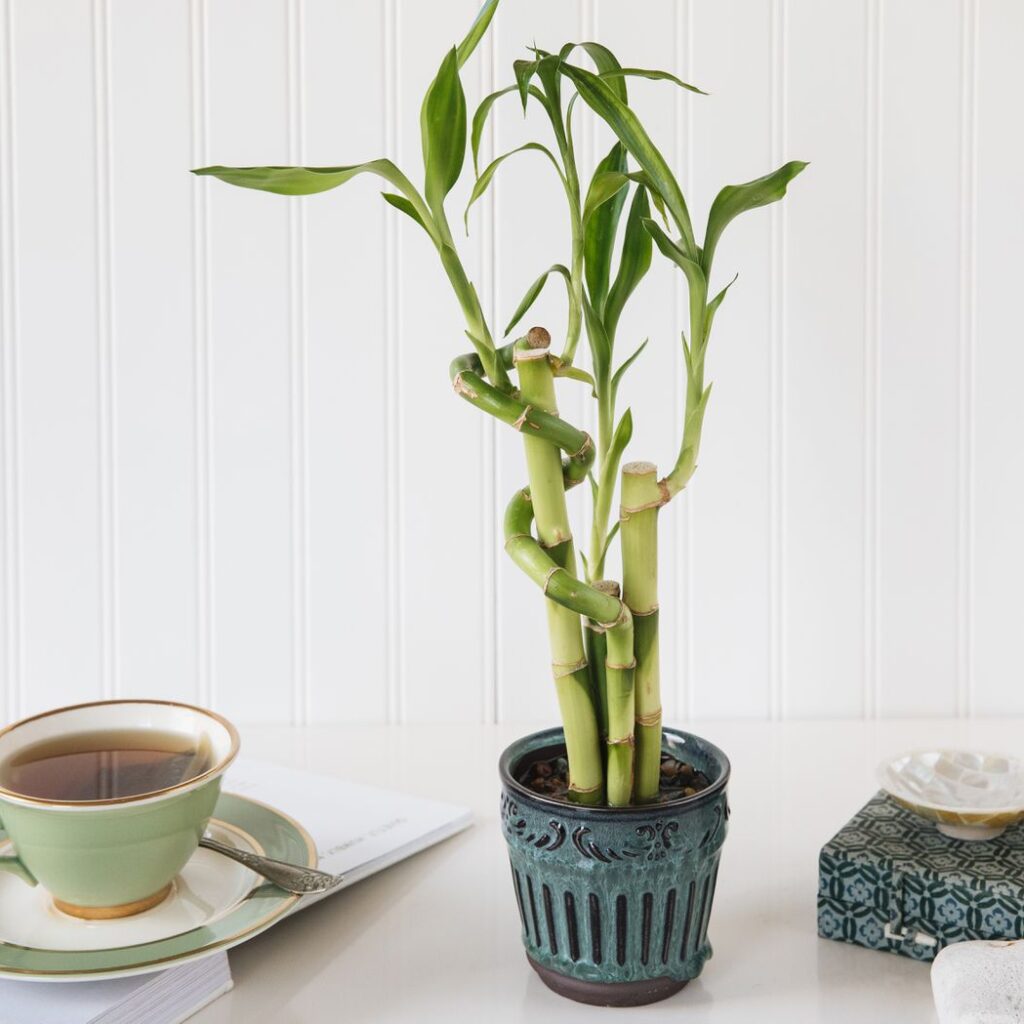
As bamboo grows, it may outgrow its container, especially true bamboo varieties.
- Lucky Bamboo in Water: Repot when stems become crowded. Move to a larger vase or container, adding fresh pebbles or marbles for support.
- Lucky Bamboo in Soil: Repot every 2–3 years, refreshing the soil to provide nutrients.
- True Bamboo: Repot yearly into larger pots, as roots spread quickly. Choose a wide, shallow container with good drainage.
Pruning and Shaping Bamboo
Pruning not only maintains plant health but also enhances its decorative appeal.
- Lucky Bamboo: Trim yellow or dead leaves with sterilized scissors. To control height, cut stems just above a node (the ring around the stalk). New shoots will grow below the cut. You can also shape lucky bamboo into spirals or braids with careful training.
- True Bamboo: Regularly prune to control size. Remove old or weak culms (stems) to promote healthier growth.
Common Problems and Solutions
- Yellow Leaves
- Cause: Overwatering, poor water quality, or too much direct sunlight.
- Solution: Switch to filtered water, reduce direct sun exposure, and trim damaged leaves.
- Root Rot
- Cause: Standing water or soggy soil.
- Solution: Refresh water regularly or improve drainage in soil.
- Pests (Spider Mites, Aphids, Mealybugs)
- Solution: Wipe leaves with a damp cloth, use neem oil spray, or rinse with water.
- Slow Growth
- Cause: Insufficient light or nutrients.
- Solution: Move to a brighter spot and fertilize occasionally.
Feng Shui and Symbolism of Bamboo
Bamboo is not only a decorative plant but also a symbol of prosperity and balance in Feng Shui.
- Number of Stalks:
- 2 stalks – Love and harmony
- 3 stalks – Happiness and prosperity
- 5 stalks – Health
- 8 stalks – Wealth and abundance
- 9 stalks – Good fortune
Placing bamboo in the east or southeast corner of your home is believed to attract positive energy and growth.
Tips for Long-Term Success
- Always use clean, non-chlorinated water for lucky bamboo.
- Avoid placing bamboo in direct sunlight.
- Rotate the plant occasionally to ensure balanced growth.
- Prune regularly to maintain shape and size.
- Refresh water and soil periodically to prevent stagnation.
Conclusion
Bamboo plants bring elegance, freshness, and a touch of symbolism to any indoor space. Whether you’re growing lucky bamboo in water as a decorative accent or a true bamboo variety in a pot, proper care is the key to enjoying its lush greenery year-round.
By providing the right balance of light, water, soil, temperature, and humidity, along with occasional pruning and repotting, you can ensure your bamboo plant not only survives but thrives indoors.
With its resilience, beauty, and cultural significance, a bamboo plant is more than just an indoor decoration—it’s a long-lasting companion that enhances well-being, attracts good fortune, and creates harmony within your living space.
